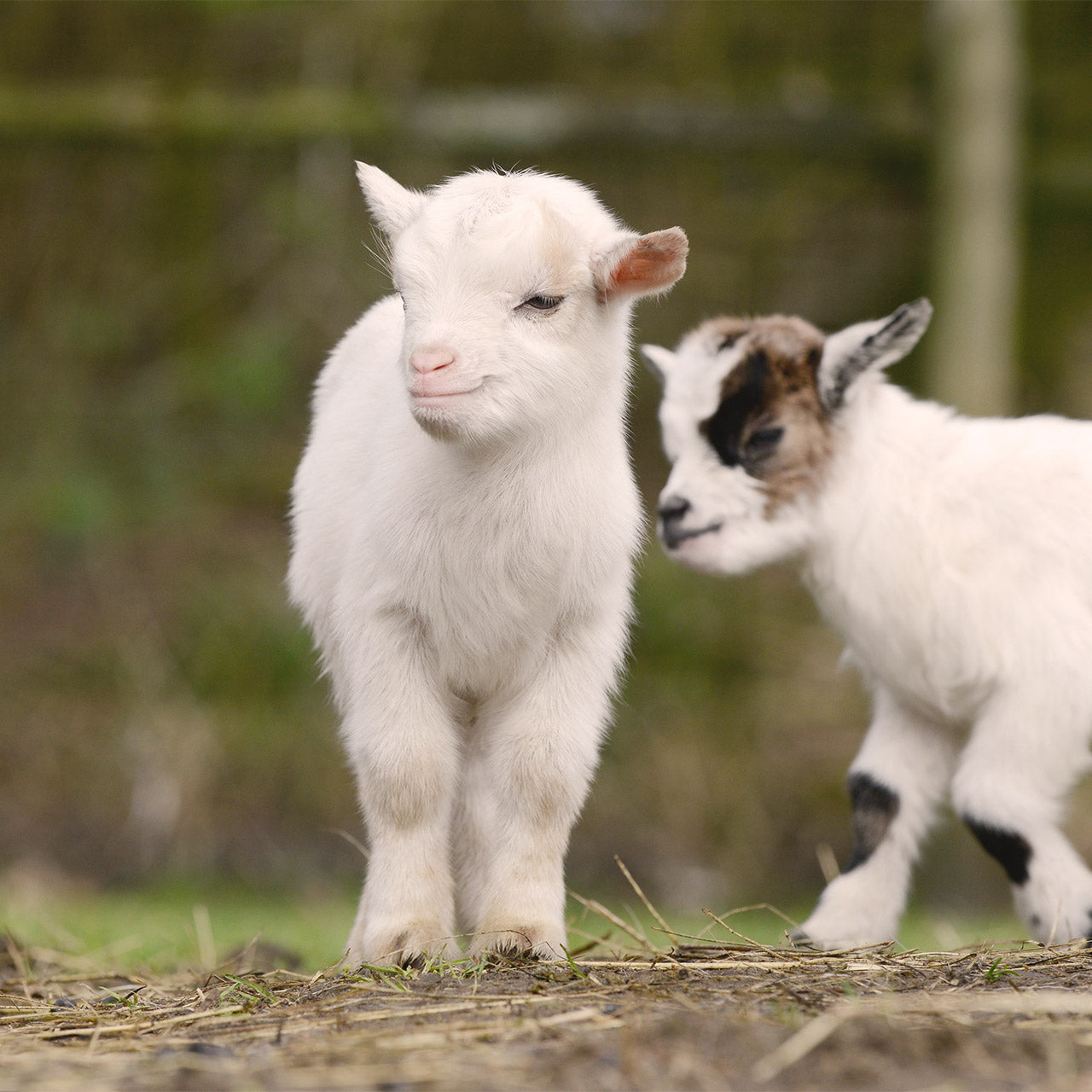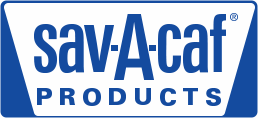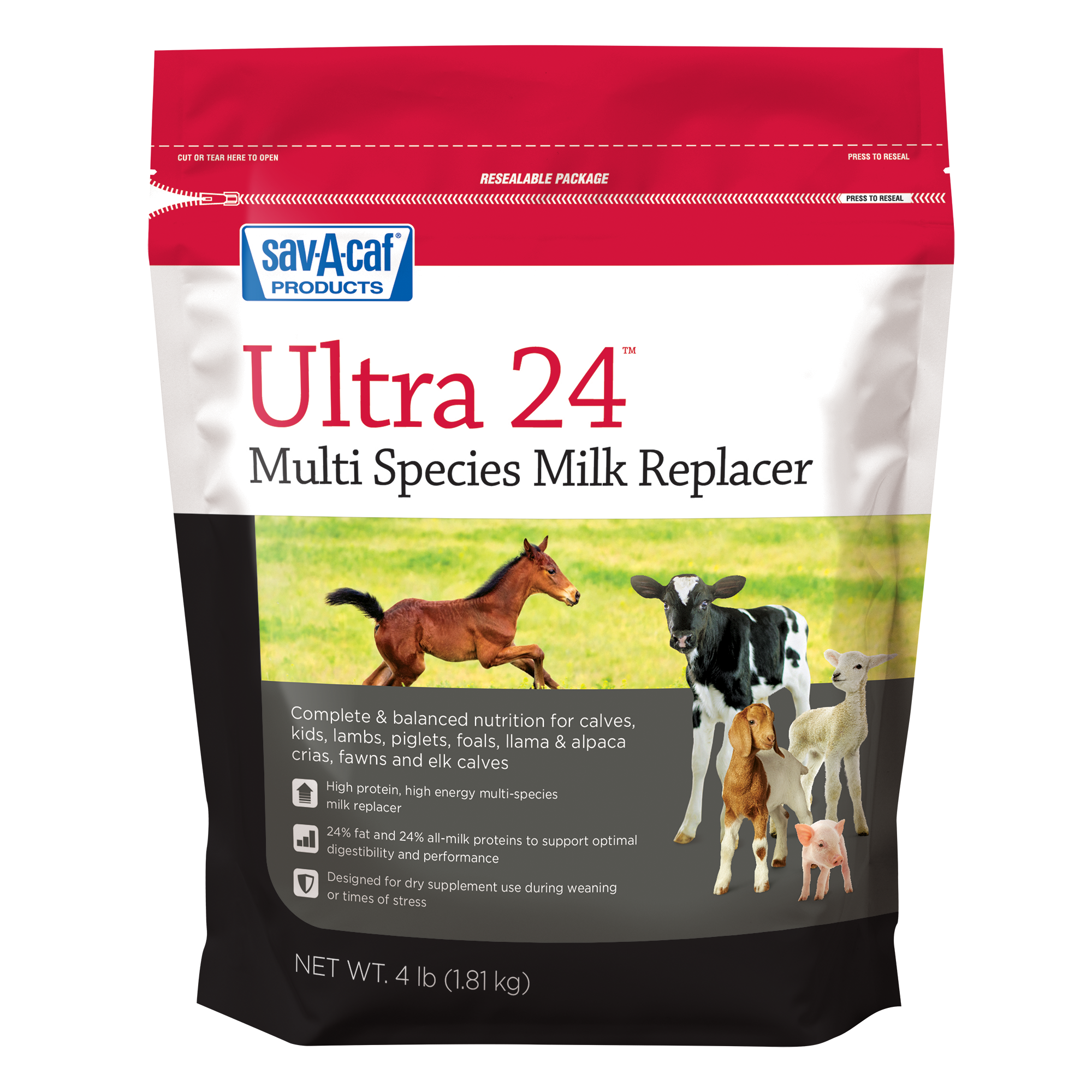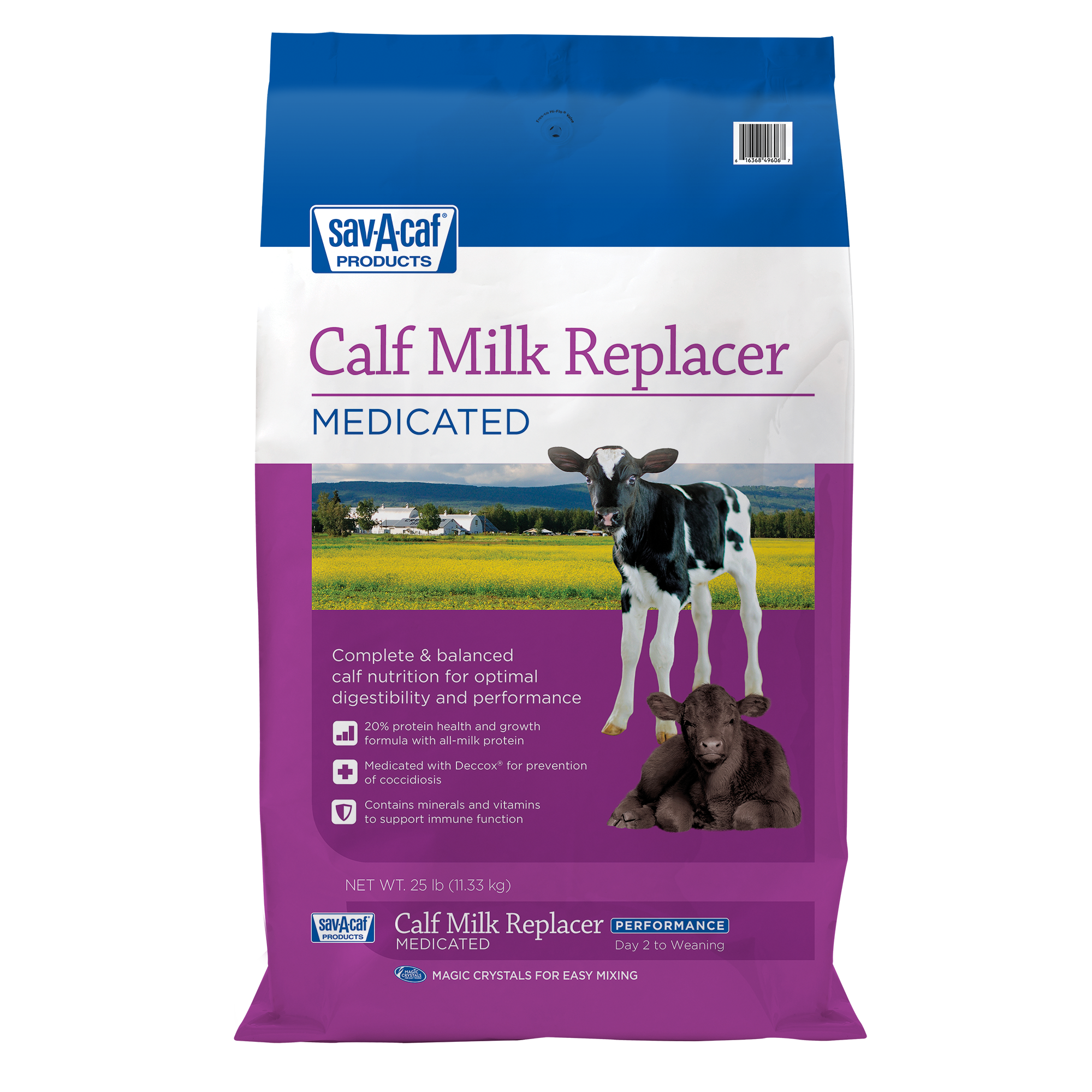
How to choose the right milk replacer for your goat kids
Before your new goats are born, it is important to prepare for them by having milk replacer on hand to supplement or replace doe milk. Take time to understand what to look for prior to choosing a goat milk replacer.
The questions below will help guide your search:
1. How do I start my milk replacer search?
When you begin to look for a goat milk replacer, select one that is formulated specifically for goats.
A milk replacer specially formulated for goats will help ensure they receive the nutrition they need to grow, which is extremely important during their early months.
Doe’s milk has a different nutritional makeup than ewe’s milk, for example. That’s why it’s important to select a species-specific milk replacer formulated to be like their mother’s milk.
Throughout your search, you will find that some goat milk replacers are available in multiple size packages. Having the option to choose a size that best fits your needs will help keep milk replacer fresh. And, you won’t have to keep more on hand than you need.
Consider how many new lambs and kids you will be welcoming before you stock up on milk replacer for the season. Review the label feeding directions to estimate how much you will need.
2. What should I look for on the goat milk replacer label?
Milk replacer packaging contains a lot of useful information and knowing what to review on the label can help you decide which one is the best fit. The most important sections of the label to pay attention to are the guaranteed analysis and the ingredients list.
- Guaranteed analysis provides a breakdown of the replacer’s nutrients. Crude protein will be listed first and crude fat second
Crude protein and crude fat are used to describe the milk replacer’s formulation. A 23:30 lamb milk replacer for example, contains 23% crude protein and 30% crude fat.
Protein and fat are the most important nutrients to evaluate since both are important for the growth and development of your kids. Crude fiber is important to consider because the percentage typically indicates the protein source.
For example, crude fiber above 0.15% indicates there may be a plant protein source in addition to the milk-derived proteins. Check the ingredient list to make sure the protein source is what you want, such as a milk-derived replacer.
- Ingredient lists include all ingredients the milk replacer contains, similar to a product you’d purchase from the grocery store. If you are bottle feeding baby goats, this list is very important.
The primary ingredients are protein and fat sources. Common sources of protein in all-milk milk replacers include whey products and derivatives, skim milk, casein and sodium or calcium caseinate. Typical fat sources include whole milk fat, lard, choice white grease and soy, palm or coconut oil. Milk fat, lard and lesser amounts of palm or coconut oil are the best fat sources.
The list will also include vitamin and mineral supplements, preservatives and flavors. Look for replacers with trace minerals and B-complex vitamins as they are important for lamb and kid growth. Probiotics and yeast extracts are often included in milk replacers to help support the digestive system.
3. Is the milk replacer easy for bottle feeding goats?
When reviewing goat milk replacer packaging, read through the feeding instructions. Step-by-step instructions outlining feeding through the weaning phase will make it easy for you to follow as goats grow.
No matter your goals, look for a milk replacer such as Sav-A-Kid® milk replacer to support health, growth and performance. Knowing what to look for in a goat milk replacer and how to feed it will help you feel confident feeding your baby goats.
Read more tips on raising goats and like My Farm Journey on Facebook and Instagram to continue learning more!



